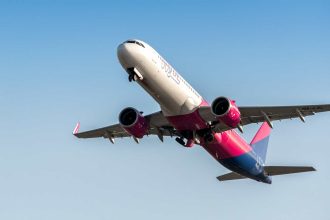Looks like this was a case of hide and go squeak on an airplane. The surprise appearance of a mouse forced Scandinavian Airlines (SAS) to divert an Oslo, Norway, to Malaga, Spain, flight for an emergency landing in Copenhagen, Denmark, on Wednesday. And this wasn’t a computer mouse. It was a real live mouse that had scampered out of the box containing a passenger’s in-flight meal.
The rodent apparently was a stowaway, assuming that there’s no record of that mouse having bought a ticket for that specific flight. You may wonder why the airline took the rather drastic measure of grounding the flight as soon as possible. Well, like many other airlines, SAS does have a policy of emergently diverting flights when an unexpected rodent is found. That’s because such rodents can pose significant safety risks to the flight. So if you do see a mouse on your flight, don’t just say, “Aww, how cute.” Instead, tell the flight crew as soon as possible.
The biggest airplane-specific risk is that rodents can chew through wiring and other airplane parts. And you kind of want an airplane’s wiring to be intact and functioning when the plane is up in the air. Also, the trouble with seeing one mouse is that you don’t know how many other mice may be in the vicinity. A single mice could be the harbinger or sign of an infestation. Therefore, the discovery of one mouse means that the crew will need to check the rest of the plane for any other furry accomplices.
Moreover, when ordering a meal anywhere—whether it’s on a plane or in a restaurant, there are reasons why you may not typically say, “I’ll have the one with the live mouse in it.” Mice can be quite dirty. They tend to pee and poop all over the place. These body fluids as well as their body surfaces can carry all sorts of icky disease-causing microbes such as various bacteria and viruses. So mice can end up contaminating with harmful pathogens anything that they may touch.
One of the most common concerns is Salmonella. Mice can readily pick up this type of bacteria when spending time around garbage, which mice tend to do a lot. I’ve written about Salmonella quite a few times for Forbes since the bacteria has led to a number of different foodborne and animal-borne outbreaks.
You don’t want this bacteria to get into your gastrointestinal tract. The result can be bad abdominal cramps and diarrhea, often bloody diarrhea. And no one want to have those kinds of symptoms during a getaway vacation. Salmonellosis can even get you sick enough to land you in the hospital, especially if your immune system is weaker.
Another this-sucks thing that mice can carry is Leptospira, bacteria that can be found in water or soil. Leptospira can cause leptospirosis, which can result in fevers, headaches, chills, muscle aches and vomiting. Now, things can get worse with leptospirosis as well, particularly if you don’t get antibiotics in time. Complications include kidney or liver damage, meningitis and even death.
Naturally, if you do find a mouse in one of your food items, don’t eat it—meaning neither the food item nor the mouse—no matter how hungry you are. Promptly discard the food and anything that may have touched the food.
It’s not clear how and when the mouse might have gotten into the meal box. The mouse didn’t provide any details. However, Jack Burgess reporting for BBC News did quote SAS spokesperson Oystein Schmidt as saying, “This is something that happens extremely rarely.” Schmift added, “We have established procedures for such situations, which also include a review with our suppliers to ensure this does not happen again.” Yes, the hope is that an in-flight meal would be very nice. And not very mice.
Read the full article here





